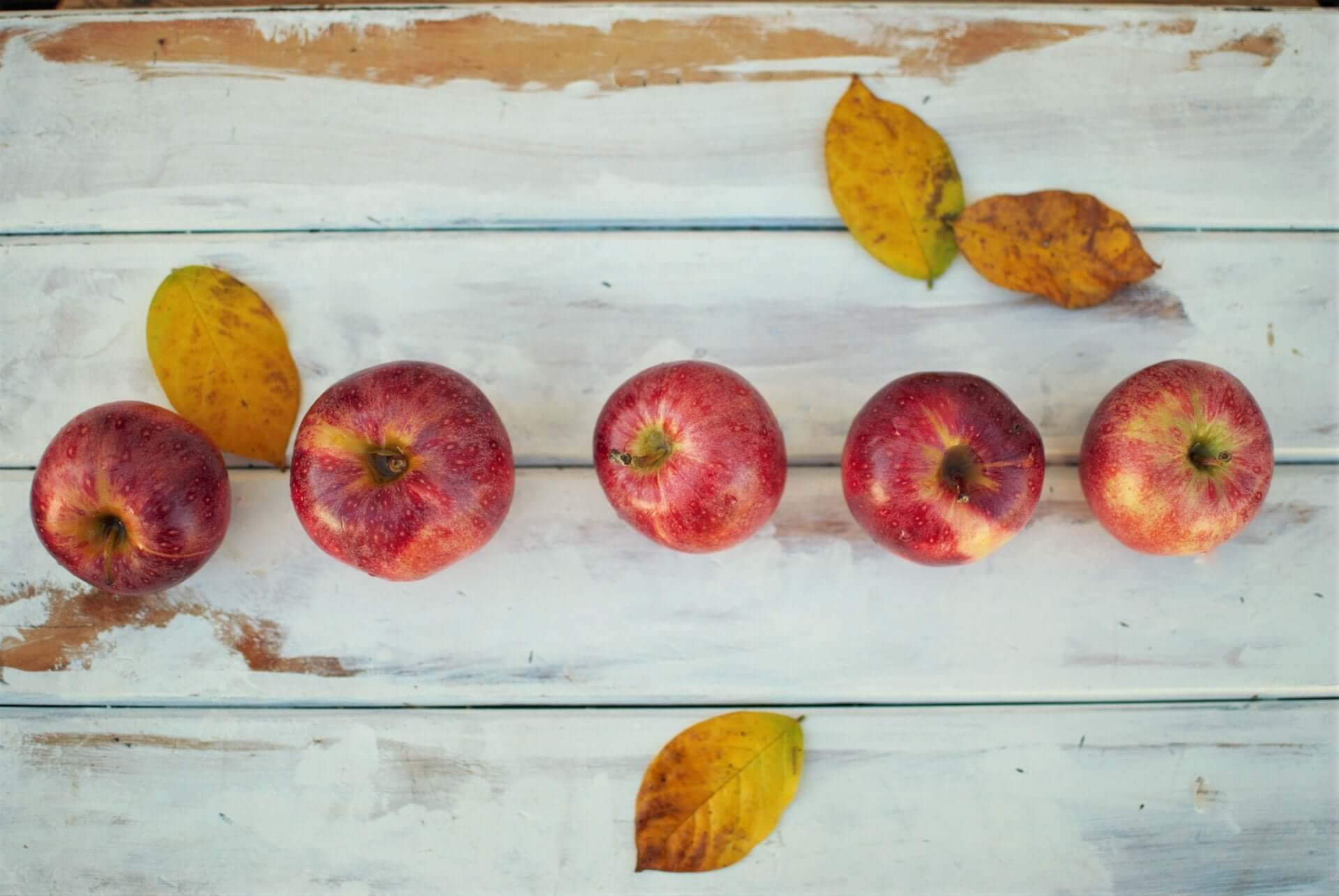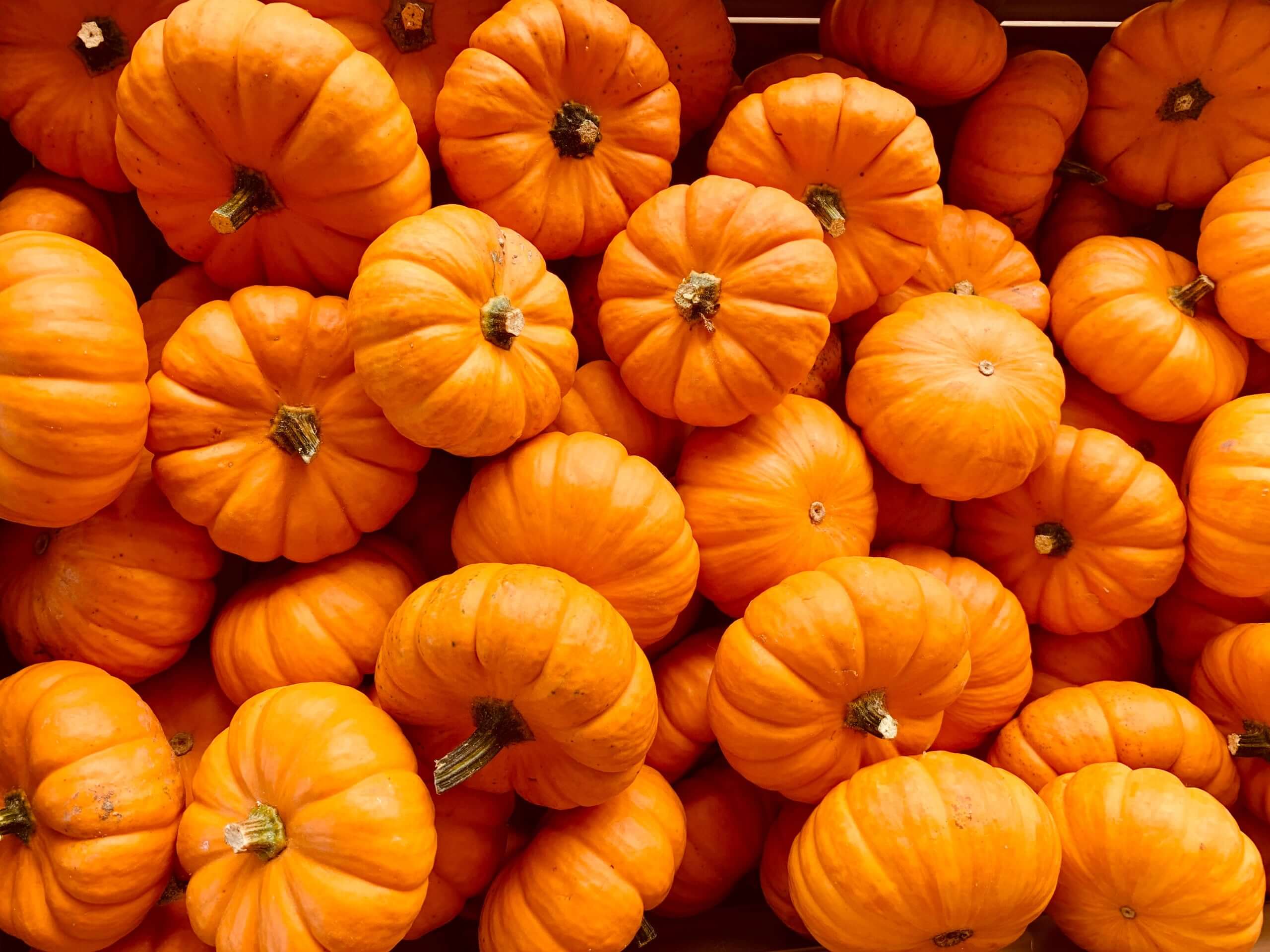
Inhaltsverzeichnis
Obst im Herbst? Welche Sorten jetzt Saison haben
Zwar gibt es im Herbst nicht mehr die fruchtige Vielfalt, mit der wir in den Sommermonaten verwöhnt werden. Dennoch hat auch der Herbst einiges zu bieten. Welche Obstsorten jetzt lokal geerntet werden, erfährst du hier.
Welches Obst gibt es im Herbt?
1. Äpfel
Einige Apfelsorten gibt es bereits im Sommer, aber so richtig in Fahrt kommt die Apfelernte erst im Herbst. In unseren Breitengraden sind Äpfel wahre Obst-Klassiker, daher muss ich wohl nicht viele Worte über den Geschmack dieser Frucht verlieren, oder? 😋
Auch wissen wir, dass Äpfel gesund sind. Aber warum nochmal genau? Vitamine? Ja, aber in dem runden Obst stecken noch eine ganze Menge weitere gesundheitliche Vorteile. Zum Beispiel enthalten Äpfel viele wertvolle Vitamine sowie sekundäre Pflanzenstoffe, welche die Körperzellen vor krank machenden freien Radikalen schützen.
Auch bei Verdauungsbeschwerden oder einem gereizten Bauch kann das Obst aushelfen: In Äpfeln sind Ballaststoffe, unter anderem Pektine enthalten, die ausgleichend wirken und eine gesunde Verdauung fördern.
Äpfel kann man nicht nur “klassisch”, also roh als Snack genießen, sondern auch wunderbar in verschiedenste Gerichte einbauen. Mein absoluter Favorit, perfekt passend in den kälteren Monaten, ist ein schöner, warmer Apple Crumble (mit Vanilleeis 🤤).
2. Brombeeren
Beeren-Fans aufgepasst! Während die meisten Beeren-Sorten Mitte des Jahres geerntet werden, verfügen wir noch bis in den Oktober über eine kleine, powervolle Beere: Die Brombeere. Trotz ihrer gesundheitlichen Vorteile würde wohl kaum eine:r die Brombeere als seine/ihre Lieblingsbeere nennen, oder? 🤔Vielleicht liegt das an ihrem süß-säuerlichen Geschmack und dem Waldaroma, die nicht jeden Geschmack treffen. Trotzdem wird die Brombeere meines Erachtens nach deutlich unterschätzt…
Ähnlich wie in Äpfeln sind auch in Brombeeren Vitamine und Ballaststoffe enthalten. Die Vitamine E und A sowie der in den Beeren enthaltene hohe Anteil an Antioxidantien gelten als “natürliche Anti-Aging-Mittel”, die vorzeitigen Alterserscheinungen entgegenwirken. Die Flavonoide (sekundäre Pflanzenstoffe, die antioxidative Eigenschaften haben), schützen die Zellen und helfen dabei, einen hohen Blutdruck auszugleichen. Damit können sie auch vor Herz-Kreislauf-Erkrankungen schützen. Das enthaltene Calcium stärkt die Knochen, das Kalium wirkt sanft entwässernd.
Ist es nicht immer wieder erstaunlich, wie viele wertvolle Inhaltsstoffe in so kleinen, unscheinbaren Geschenken der Natur enthalten sind? :)

Photo by Nick Sarro on Unsplash
3. Quitten
Eine Freundin meiner Mutter hat einige Quittenbäume und überlässt meiner Mutter jeden Herbst eine beträchtliche Menge an Quitten. Aus diesen macht meine Mutter dann Quittengelee oder -marmelade, und das ganze Haus duftet herrlich süß nach der Frucht. Damit sind Quitten für mich das Herbstobst schlechthin.
Die Erntezeit dieses Obstes ist kurz und findet zwischen September und Anfang November – also genau in den Herbstmonaten – statt. Für viele ist die Quitte noch unbekannt. Optisch ähnelt sie von der Form her einer Mischung aus Apfel und Birne. Ihre leuchtend gelbe Farbe erinnert hingegen mehr an eine Zitrusfrucht, und auch der Geschmack hat ein intensiv fruchtiges und süßliches, aber auch zitroniges Aroma.
Im Supermarkt sind Quitten selten zu finden, daher sollte man auf dem Wochenmarkt oder einem türkischen Supermarkt (oder eben bei Freund:innen oder Nachbar:innen, die einen Baum im Garten haben) Ausschau danach halten.
Auch in Quitten ist Pektin enthalten, welches einen gereizten Darm beruhigt und bei Verdauungsproblemen Abhilfe schaffen kann. Zusätzlich stecken im Fruchtfleisch der Quitte Gerbstoffe, die antibakteriell wirken und damit vor schädlichen Bakterien schützen.
Vor der Verarbeitung sollte der feine Flaum auf der Schale der Früchte mit einem Tuch abgerieben werden, da sich die dort enthaltenen ätherischen Öle negativ auf den Geschmack auswirken können. Nach dem Waschen kann das Fruchtfleisch vom Kerngehäuse abgetrennt werden. Die Kerne sollten jedoch nicht weggeschmissen werden! Getrocknete Kerne kann man bei Husten oder Halsschmerzen wie ein Bonbon lutschen. Die Schleimstoffe (ekliges Wort, oder? :D) wirken heilend und beruhigen Hals und Rachen. Zerbeißen bzw. kauen sollte man die Kerne aufgrund des sehr bitteren Geschmacks dann aber besser doch nicht…

Photo by Markus Spiske on Unsplash
4. Trauben
Last but not least auf dieser kleinen Liste: Weintrauben. Jede:r kennt sie, fast jede:r mag sie. Trauben gehören zu den ältesten Obstsorten überhaupt. Hierzulande sind sie zwischen August und November erhältlich und stellen einen beliebten Snack dar. Während etwas unreife Trauben noch säuerlich schmecken, sind sehr reife Trauben zuckersüß. Durch diese Süße und ihre mundgerechte Größe ist das Obst auch bei Kindern sehr beliebt.
Zugegebenermaßen gibt es andere Obstsorten, die mit mehr Vitaminen oder weniger Zucker punkten können. Das macht die Traube aber keineswegs ungesund oder unwichtig: Einer Studie zufolge kann sich unser Gedächtnis durch den in Trauben enthaltenen Pflanzenstoff Resveratrol signifikant verbessern. Dieser Stoff hat übrigens auch positive Auswirkungen auf die Durchblutung unseres Körpers.
Weitere wichtige Inhaltsstoffe der Traube sind oligomere Procyanidine (OPC), die deutliche gesundheitliche Vorteile haben. Unter anderem helfen sie bei Gelenkschmerzen, senken den Cholesterinspiegel und verlangsamen Alterungsprozesse der Zellen.
Ein Großteil dieser vorteilhaften Inhaltsstoffe steckt übrigens in der Haut und den Kernen von Trauben. Möchte man also von allem profitieren, was die Traube zu bieten hat, sollte man öfter zur herkömmlichen Variante mit Kern greifen. :)
Wenn du noch mehr über gesunde Ernährung, Achtsamkeit oder Nachhaltigkeit erfahren möchtest, schaue dir hier noch mehr spannende Blog-Artikel zu diesen Themen an.

Photo by Markus Winkler on Unsplash



























Leave a comment
This site is protected by hCaptcha and the hCaptcha Privacy Policy and Terms of Service apply.